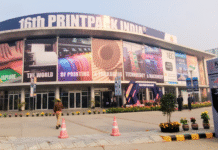
While Indian printers and packaging converters have shown some interest in the mandatory compliance of customers, they have generally stayed away from formalizing best practices and standards that could make them more efficient and profitable. Over the years, this reluctance was associated with their perception that standards are complicated and verging on the impossible for print. “If customers are not asking for them, why do it?” they said.
Nevertheless, there is a resurgence by the industry and some interested experts in participating in the MSD 6 committee of the BIS (BIS) to educate printers on standards, helping them achieve best practices and standardization on a day-to-day basis and eventually go on to certifications. This also implies greater participation in the MSD 6 for discussing and commenting on the standardization work in the graphic arts communication and color quality work of the ISO TC130 committee.
Recent hybrid meetings of the MSD6 committee under the leadership of Anjan Baral at the BIS have brought in newer and younger industry members and become more lively. The comments on the ISO and Indian standards while still not in full flow, have started to improve and trickle in. The recent hybrid seminar and webinar held on 17 March 2023 was able to physically gather printing personnel from the Delhi-NCR as well as students from the printing colleges and was also webcast across the country.
The speakers included experienced experts and hands-on trainers and certifiers who emphasized the importance of print even in the forthcoming digital world where print and communication technologies anchor digital communication and products even while they are taken for granted. Just as it may be said that the economy requires a digital backbone, it could be said that all forms of communication require vertebrae or glue that consists of the mass replication of symbols, characters, language, and visual techniques and synthesis that stem from print.
The speakers at the event by and large spoke of the necessity and advantages of best practices, standardization, and certification. The widely experienced Kiran Priyagi explained that the basics of understanding the components of print and its process are key – that the variables are immense and process controls are important. Priyagi also emphasized training – the human resource needs to be continuously trained – as standards evolve and the process achievements need to be brought from abstract wishful thinking to day-to-day practice and testing on the shop floor.
Moreover, the software and tools have now become affordable in comparison to the cost of the automated presses whose efficiency and payback depend on standardization. The young Ishant Kalkal now experienced in the calibration of output devices including monitors, CtPs and offset presses demonstrated the standardization of a multicolor offset press with great confidence and insight. His presentation showed that the technology has arrived so that it can cost-effectively yield data and useful parameters that lead to working feedback for controlling variation within a printed sheet and throughout a print run.
Readers may recall that Steve Smiley under the aegis of IppStar and Idealliance conducted a G7 certification training of 27 candidates in 2016 in Mumbai of whom a dozen candidates successfully passed the course. Eight candidates went in for certification as G7 experts from across the country.
Over the past few years, several print businesses in India have undergone training, standardization, and certification both with the help of Smiley and local experts. Now there are considerable and reliable resources in the country who can train, standardize, and certify printing company personnel, processes, and presses. Experts who have certified presses include independent and professional consultants such as Kiran Priyagi, Aniket Rane, Ishant Kalkal, and several others who are full-time employees of print and packaging companies or distributors of instruments and software.















